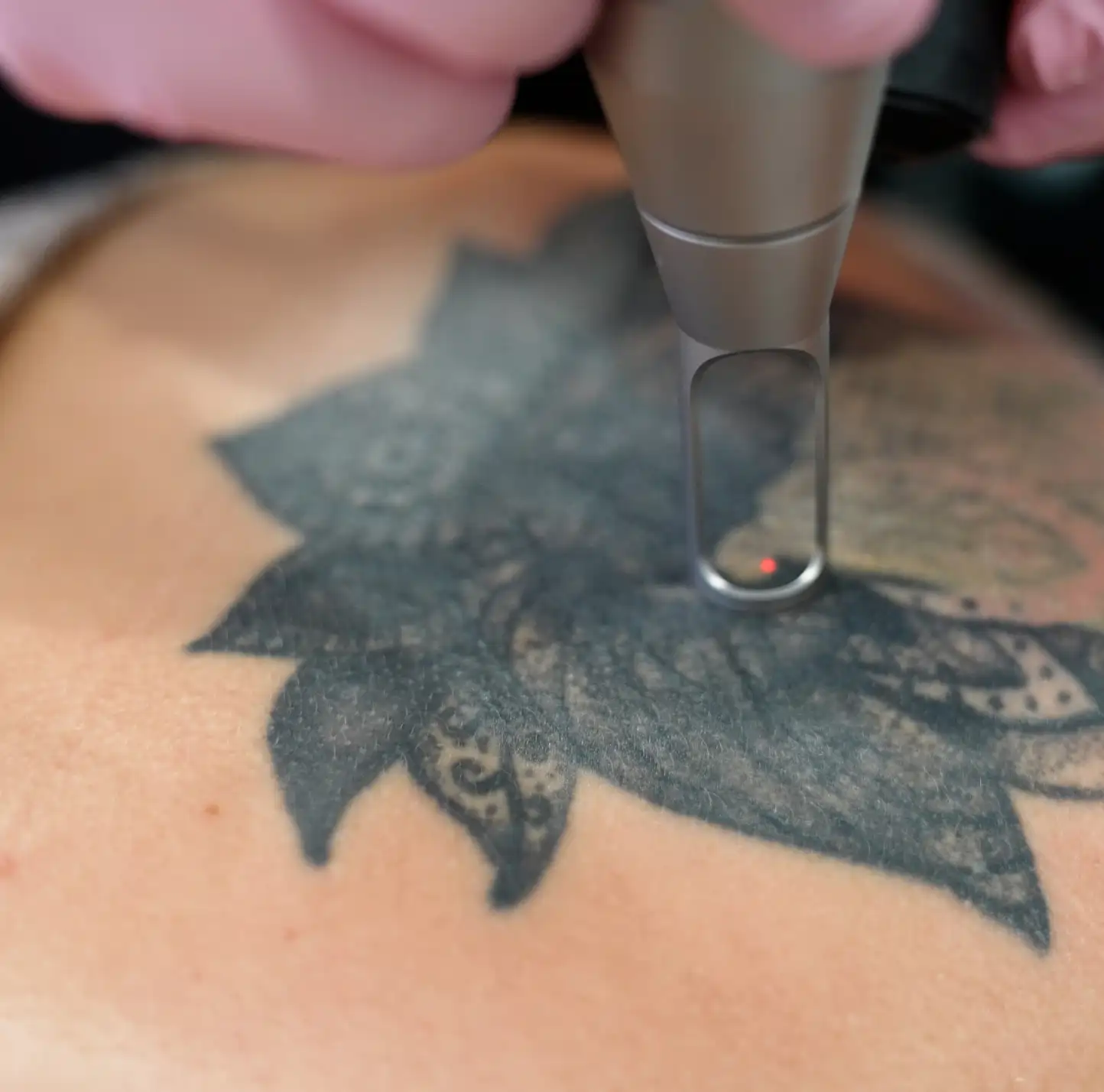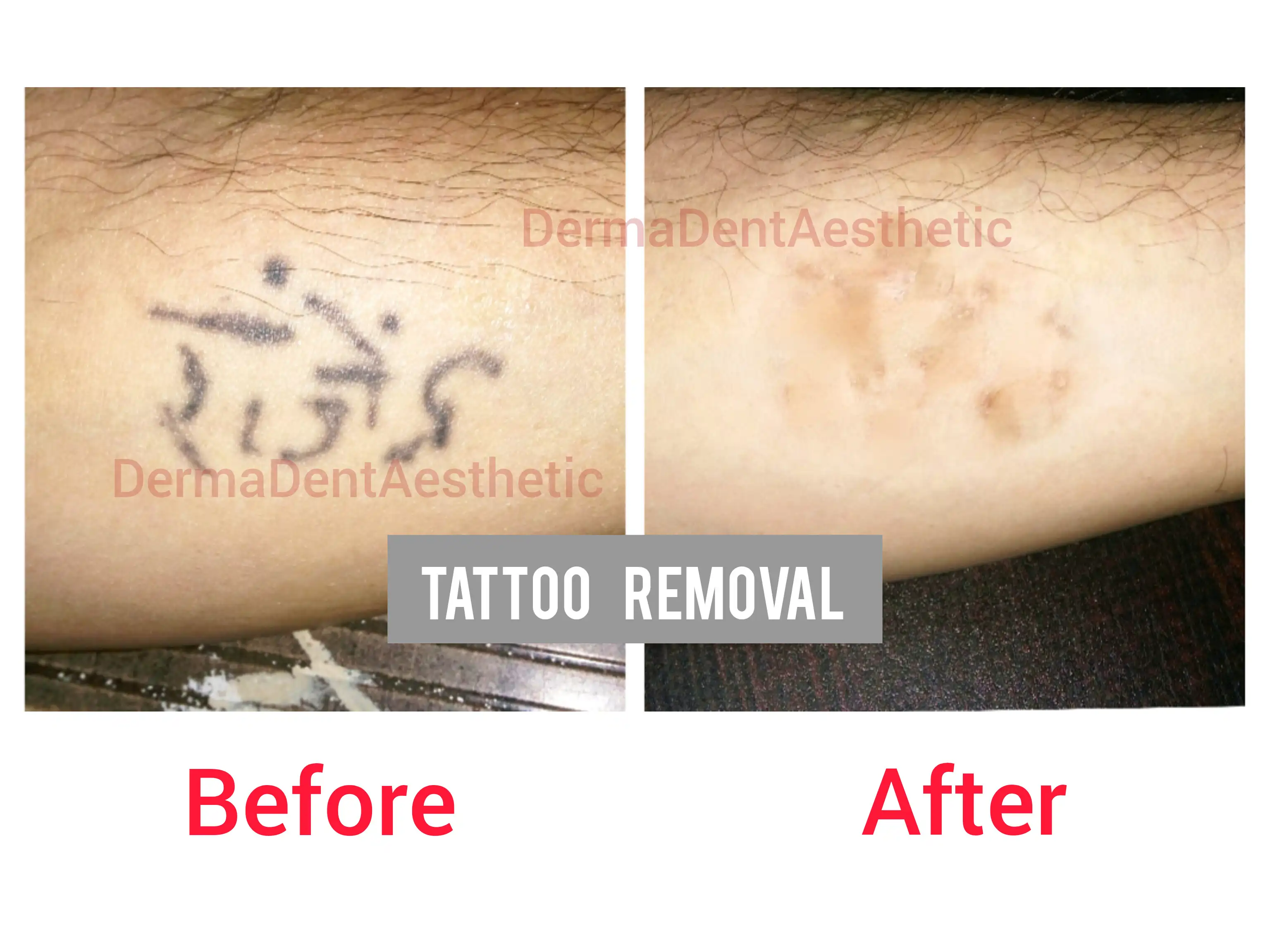Laser-Tattoo-Removal

Laser-Tattoo-Removal
What is Laser Tattoo Removal?
Laser Tattoo Removal is a specialized dermatological procedure that uses high-intensity laser beams to break down the ink particles in tattoos. Over time, the body's natural immune system clears these particles, gradually fading the tattoo. Unlike traditional methods such as dermabrasion or excision, laser treatment is more precise, safe, and has minimal risk of scarring.
What's Included
How Does Laser Tattoo Removal Work?
- Targeting the Ink with Laser Light: Pulses of light penetrate the skin and are absorbed by the tattoo ink.
- Ink Particle Breakdown: Laser energy breaks ink into tiny fragments.
- Body's Natural Clearance: Immune system removes the particles through the lymphatic system.
- Repeat Treatments: Sessions are spaced 4–8 weeks apart for healing and effectiveness.
Who Is a Good Candidate?
- People with unwanted or outdated tattoos
- Those preparing for cover-ups
- Patients with tattoo regret
- Most body locations
- Pregnant or breastfeeding women
- People with active skin infections
- Keloid-prone individuals (caution advised)
✅ Suitable for:
🚫 Not Suitable for:
Factors That Affect Removal Results
- Ink Color: Black is easiest to remove; green, blue, and yellow require special lasers.
- Tattoo Depth & Quality: Professional tattoos may have deeper ink and take longer to remove.
- Skin Type: Darker skin requires caution to avoid pigmentation issues.
- Tattoo Age: Older tattoos may fade faster.
- Location: Tattoos near the heart (chest/arms) clear faster due to better circulation.
Side Effects & Risks
- Redness & Swelling: Usually mild and temporary, resolves in days.
- Blistering: May occur within 24 hours, part of normal healing.
- Hyperpigmentation: Darkening of skin, common in darker tones, often reversible.
- Hypopigmentation: Light patches, especially in deep laser settings, usually temporary.
- Scarring: Rare; avoidable with expert handling and proper aftercare.
Dermatologist’s Advice
- Always perform a patch test before full treatment.
- Follow aftercare strictly: no sun, no scratching, no makeup.
- Allow 4–8 weeks between sessions for proper healing.
- Choose only qualified, board-certified dermatologists.
"Laser tattoo removal is highly effective when done with the right laser and by a certified dermatologist. Avoid DIY or salon lasers—they may cause burns or scarring."
Number of Sessions Required
- Black ink on fair skin: 4–6 sessions
- Multicolored tattoos: 6–10+ sessions
- Amateur tattoos: 3–6 sessions
- With picosecond lasers: ~30–50% fewer sessions
Aftercare Guidelines
- Apply antibiotic ointment for 2–3 days post-treatment.
- Keep area clean and dry; no tight clothing or rubbing.
- Avoid sun exposure until fully healed.
- Do not scratch or pick blisters/scabs.
- Apply SPF 50+ sunscreen after healing to prevent dark spots.
Summary of Benefits
- Safe & Effective: Performed by dermatologists with modern technology
- Long-Term Results: Pigments are permanently removed over multiple sessions
- Skin-Specific Settings: Customized laser type for each skin tone and tattoo
- Minimal Downtime: ost patients resume daily activities the same day
Medicine Use Disclaimer: Do not self-prescribe or start any medication or topical treatment without consulting a qualified doctor. Improper use can lead to side effects, resistance, or complications. Always follow professional medical advice.

